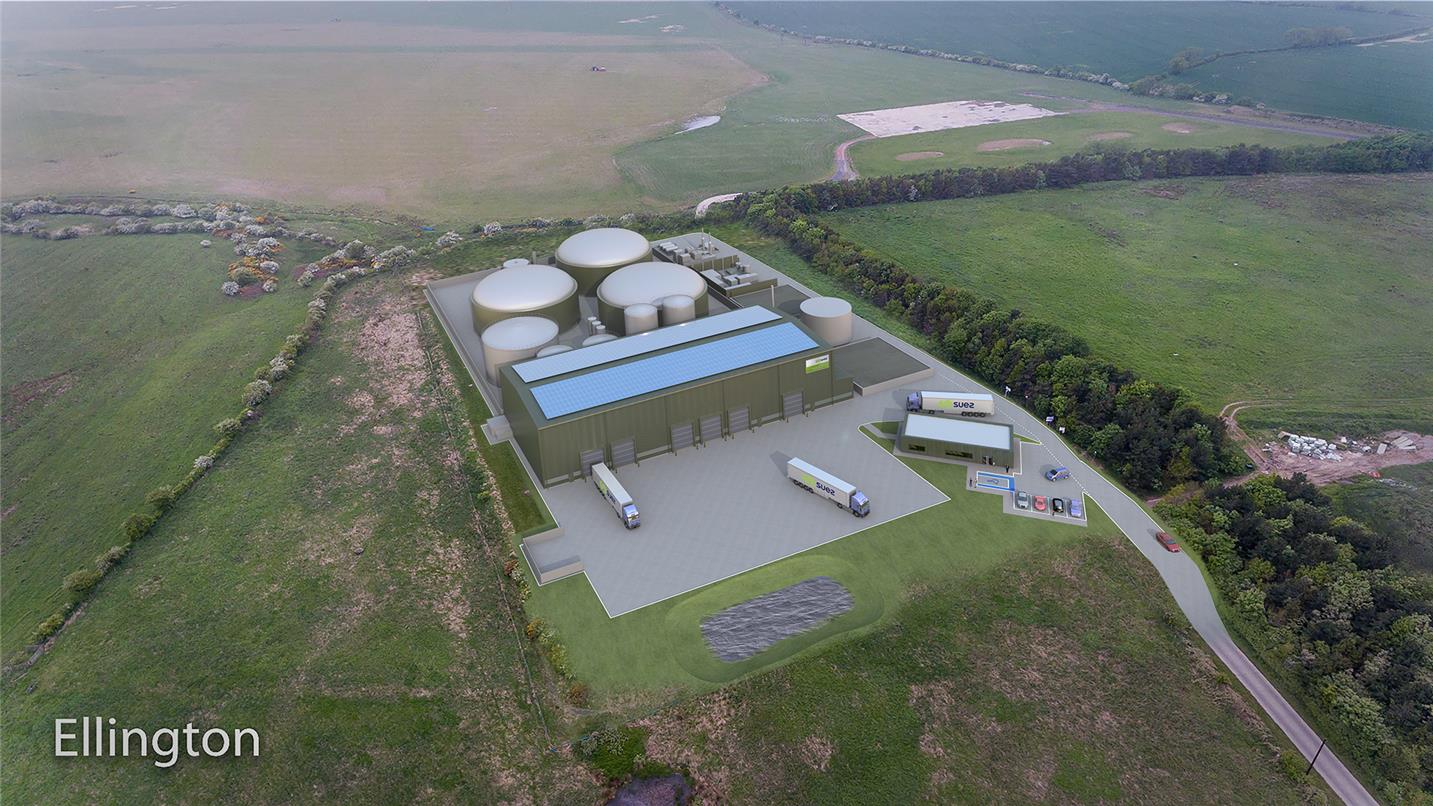Why do we need anaerobic digestion facilities?
The government has a strategy to reduce food waste and put any food that is wasted to good use, generating renewable energy and therefore helping achieve its goal to eliminate food waste to landfill by 2030.
Following consultation on the government’s 2021 Environment Bill, it’s expected that homes and businesses will be required to separate and recycle food waste, just like they do for cardboard and glass.
Anaerobic digestion facilities will be key to putting this collected food waste to good use. They do it by turning the waste into a renewable and reliable supply of ‘green’ biogas, and digestate, a compost‑like soil improver.
What we plan on building
Our Ellington Road site is not expanding. If approved, the anaerobic digestion facility would sit on the site of an existing waste treatment facility, an in-vessel composter, which will be demolished to make way for the new facility.
The proposed anaerobic digestion facility will be comprised of a building, three digester tanks and several other smaller tanks.
Overall, the facility would sit on a footprint of 12,500m2 which is roughly the size of two football pitches. The building will be approximately 1,950m2 in area and have a maximum height of 17m. The digester tanks will have a diameter of 32m and a maximum height of 15.5m. The other tanks will be no higher than 17m.
The new facility is a more efficient and controlled technology than in-vessel composting and will be developed adjacent to the rest of the Ellington Road site. Considering this and the local landscape, our project is not expected to substantially alter the appearance of the existing site.
Why build it at our Ellington Road site?
Our Ellington Road site is a good location for the anaerobic digestion facility, because:
- The site already processes organic wastes.
- We identified that once separate food waste collections begin in earnest, there will be a treatment capacity gap in the region.
- Our Ellington Road site is located close to the city of Newcastle and the main settlements of Northumberland allowing for easy transport of food waste.
- The site is located very close to the gas grid, allowing ease of transportation of biogas from the facility onto homes and businesses.
What the proposals mean for you and your community
When compared to the existing in‑vessel composting facility, we expect that the proposed facility will not result in any new impacts on biodiversity, noise, odour or traffic and will not alter the character of the area.
An Environmental Impact Assessment is not required for the development due to its expected low impact. Nonetheless, relevant surveys and site investigations covering the above topics will be submitted as part of the planning application to Northumberland County Council.
Visual / landscape
Odour
Noise
Traffic
Construction traffic will be subjected to a Traffic Management Plan, agreed with the local authority, to ensure safe movement in and around the site. It is expected that traffic will move via the A189 and the A1068 to avoid residential areas.
During operation, it is anticipated that the anaerobic digestion facility will replicate the existing vehicle movements delivering waste to be treated. These deliveries to the facility are expected to be restricted in-line with current conditions restricting movements to 125 vehicles per day across the entire site and will only take place between 07:00–20:00 Monday to Friday and 07:00–17:00 on a Saturday.
Biodiversity
It is expected that the development will not have a negative impact on the biodiversity as the anaerobic digestion facility would be built on previously developed land, replacing the in-vessel composting facility.
We will undertake a range of ecology surveys to ensure there are no risks to surrounding wildlife and habitats.
Anticipated project timeline
This project has the relevant planning and permit permissions. Construction could begin in 2026 and be operational in 2027.



